Background:
Part of the MGM7 intake development process has been investigating whether a ram air effect inside the Mk7 engine compartment might help the intake system deliver air with less net pressure loss to the turbocharger.
A previous post reviewed measurements using an Eventuri intake and found the ram air effect to be slight, but present.
In this post, measurements made using a stock Mk7 airbox are reviewed and compared with the aftermarket Eventuri intake to evaluate if the aftermarket intake increases the ram air effect over the stock intake.
Test Setup:
The previous post gives more details about the test setup. Briefly, an averaging flow sensor (AFS) is installed in a housing that facilitates locating the sensor at the outlet of an intake.
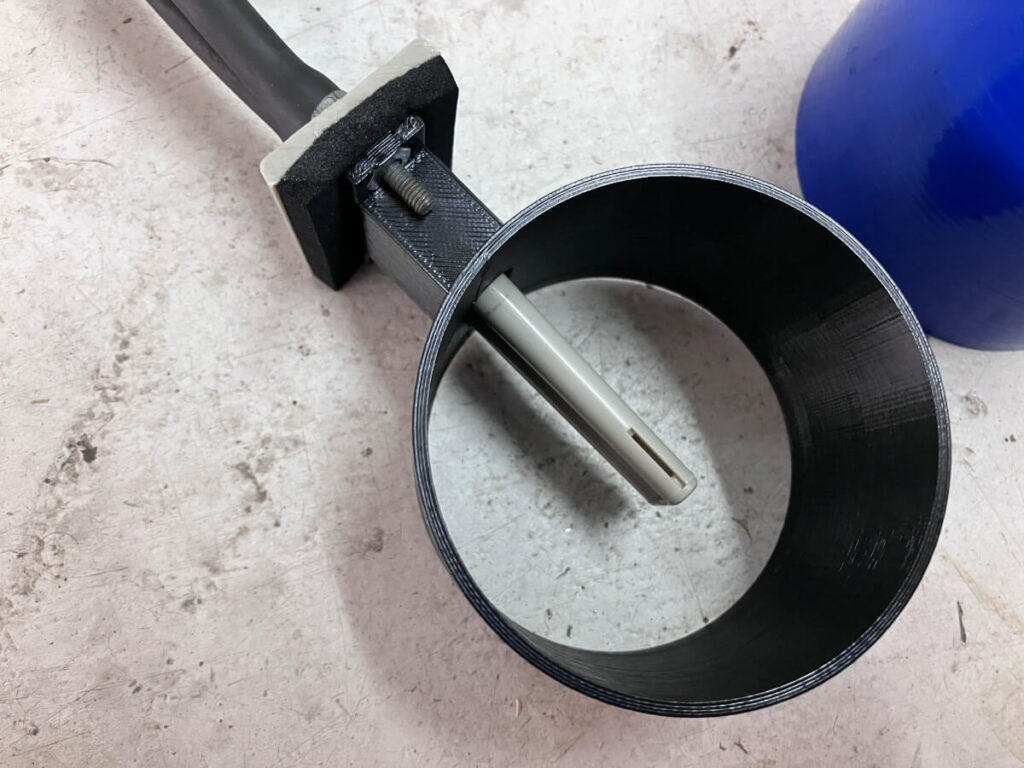
The AFS housing is attached to the outlet of the stock airbox using a silicone coupler hose, shown in blue in the image below.
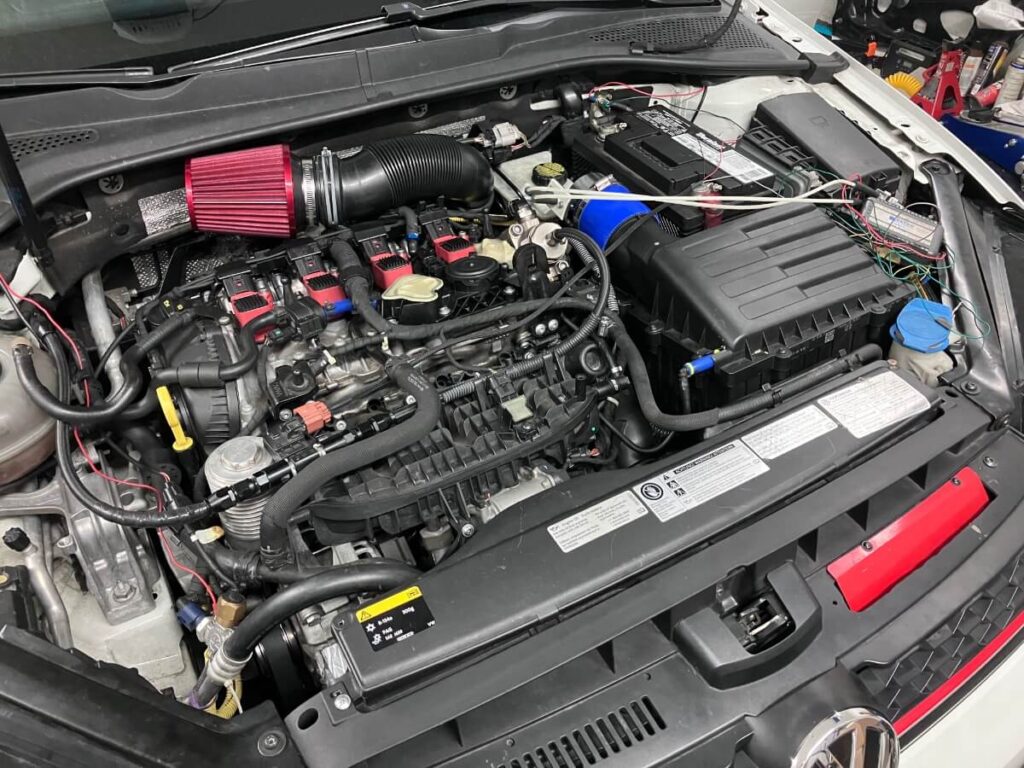
The accordion hose that joins the airbox to the turbo inlet is disconnected and rotated away from the intake so that only “ram air” will pass through the AFS housing.
A small cone air filter is attached to the accordion hose to filter the intake air.
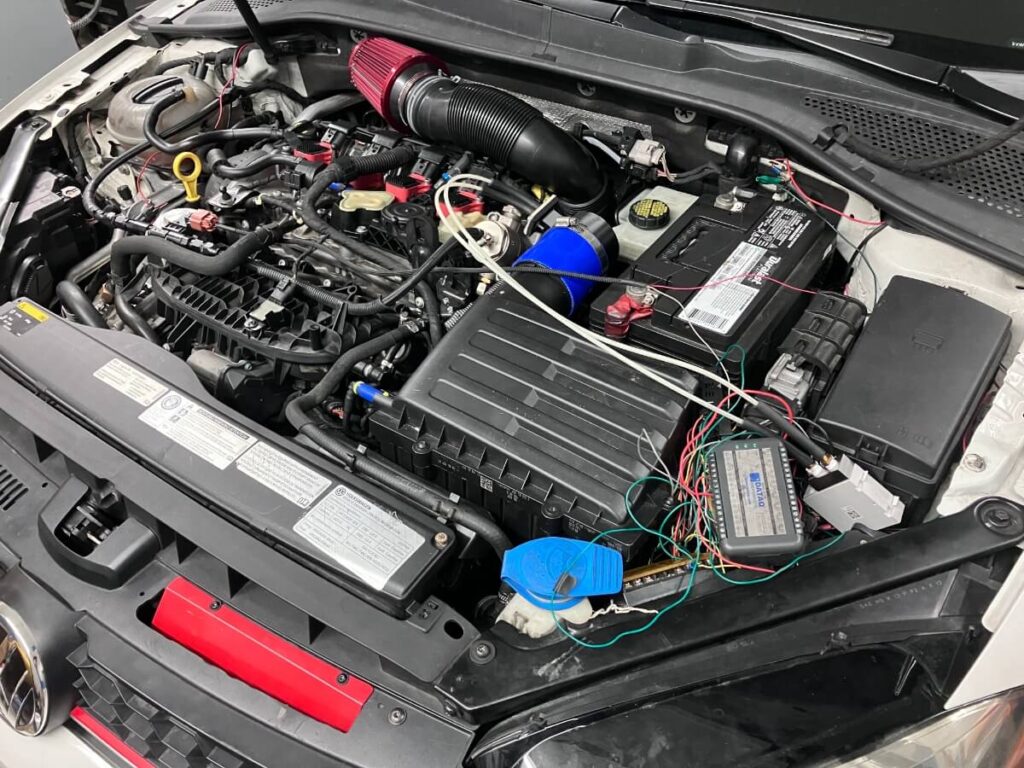
The stock duct has been modified by opening up the front of the duct on the driver’s side and the opening on the back of the passenger’s side has been covered.
The baffle/snow guard found in the lower half of the airbox has been removed.
A stock-type Mann panel air filter is installed in the airbox.
The AFS is connected to a differential pressure sensor to calculate the difference in the total and static pressures. The resulting dynamic pressure is logged using a DATAQ DI-149 data logger.
Test Procedure:
The GTI is driven on the street at varying speeds to measure the ram air effect versus vehicle speed. The vehicle speed is recorded using a datalogger that attaches to the vehicle’s OBD port.
Test Results:
The chart below shows vehicle speed and ram air dynamic pressure, labeled in H2O (AFS).
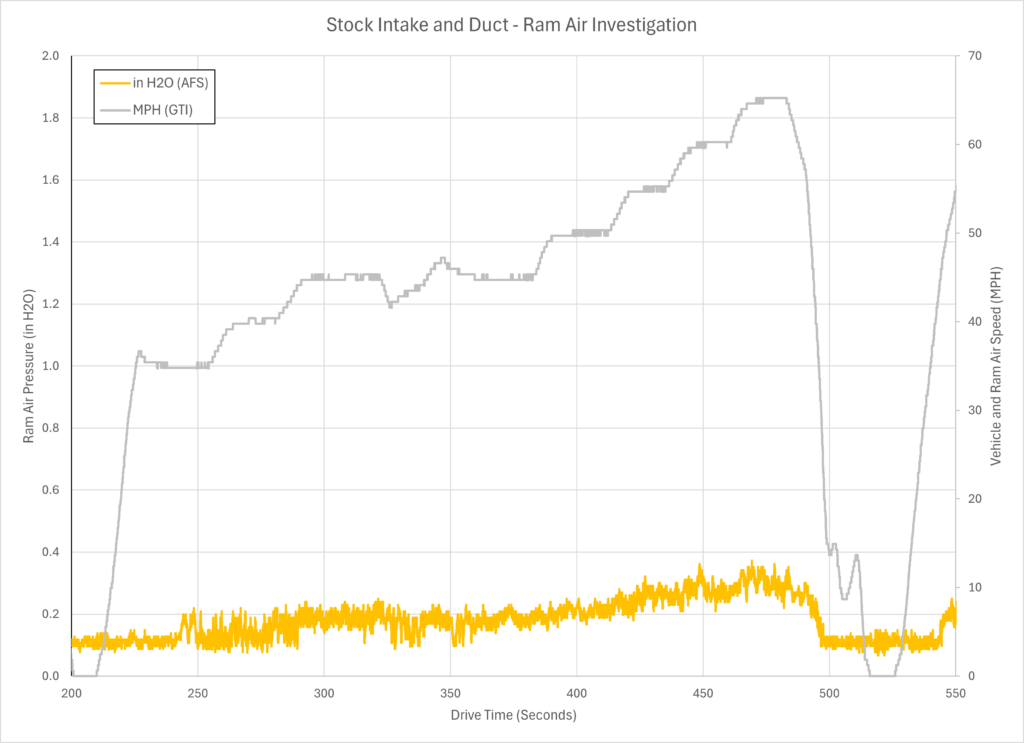
The next chart is from the Eventuri intake test of the same variables:
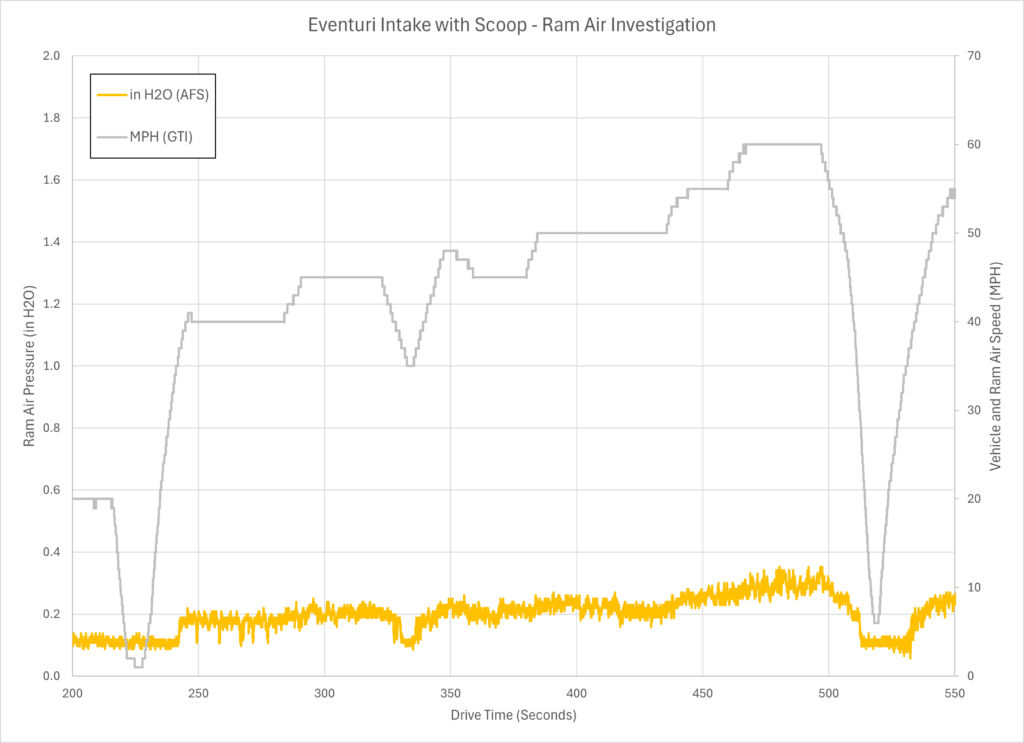
This chart shows the data from the Mk7 intake test (STK) and the Eventuri intake test (EV) overlayed:
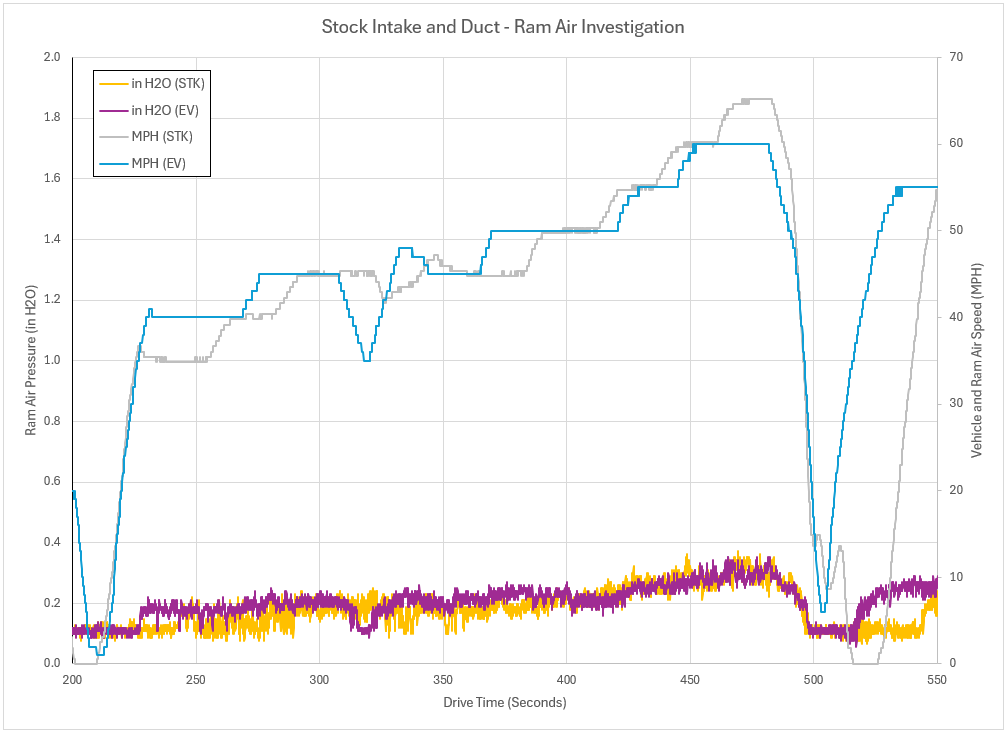
There is a negligible difference in the pressure readings taken using the stock and Eventuri intakes.
It was discussed in the Eventuri test on the subject of calibration that this magnitude of dynamic “ram” pressure is correlated with an airflow speed of approximately 15 mph through the intake at a vehicle speed of 60 mph.
External Ram Air:
With the Eventuri and stock airboxes producing similar amounts of ram air effect the next question was to learn how much ram air effect might be present around the vehicle.
Looking into this topic also provided an opportunity to compare the pressure-derived air velocity estimate with the vehicle-reported speed, which should be close to the airflow speed through the AFS housing if the housing is located outside of the engine compartment.
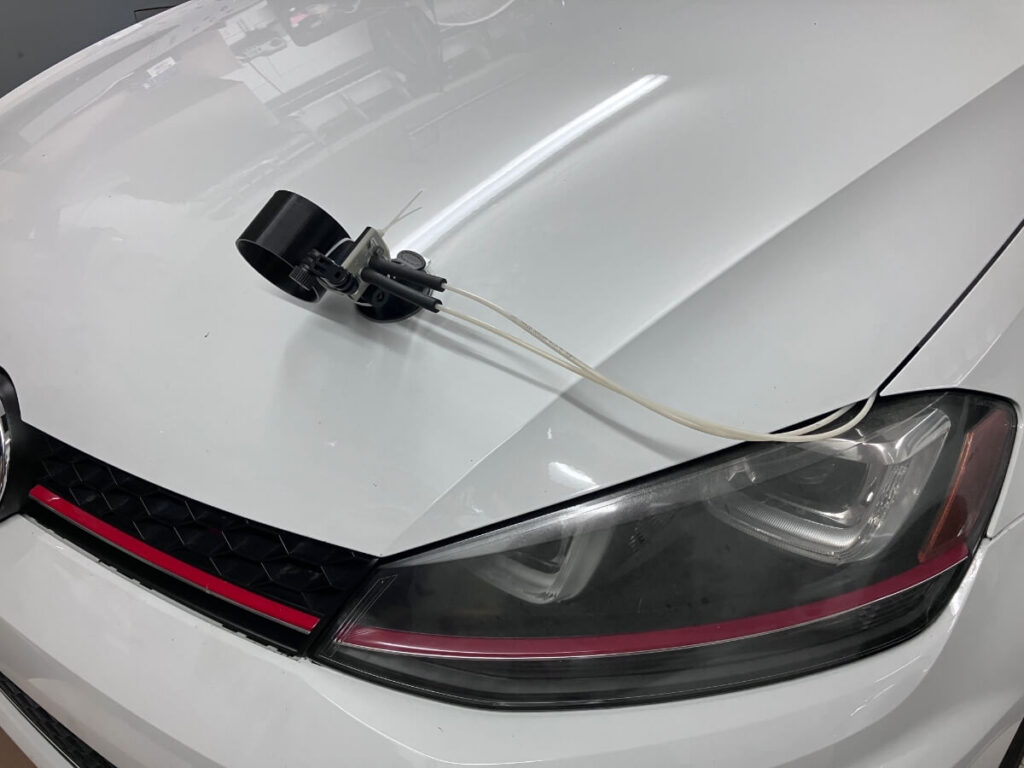
To this end, a GoPro mount is repurposed to hold the AFS housing and is attached to the GTI hood.
The AFS housing is angled to follow the hood line with the expectation that airflow close to the hood will follow the hood line and not travel directly towards the vehicle.

With the AFS pickup at this location, the ram air effect from free stream airflow will be measured.
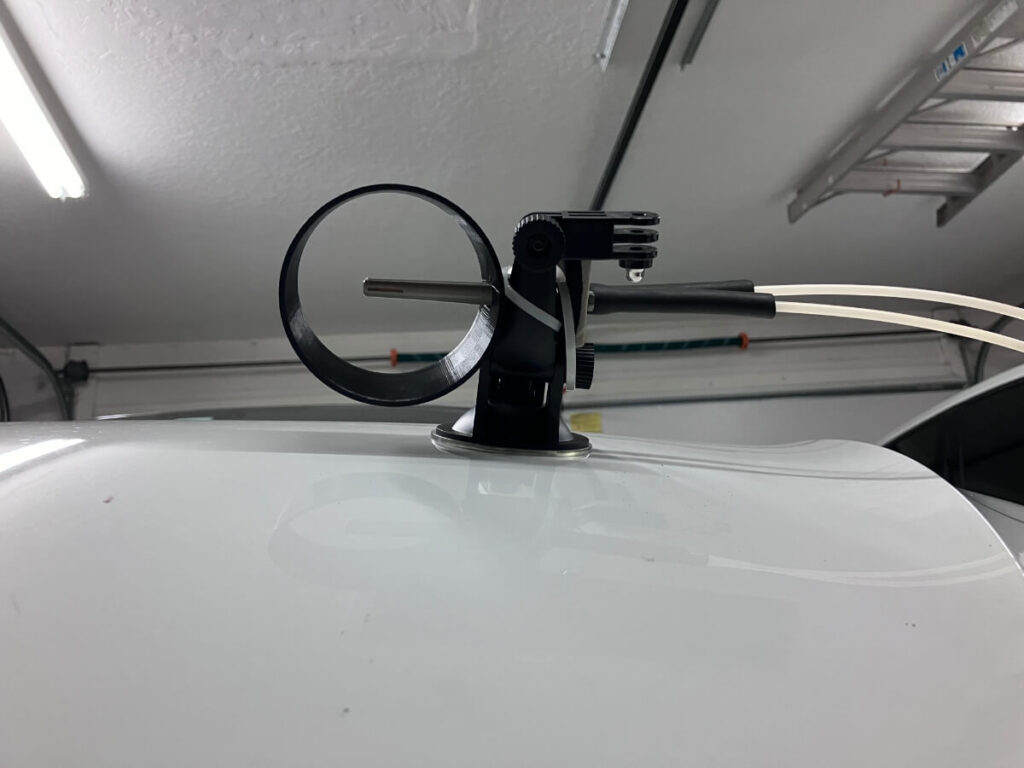
The GTI is driven similarly to how it was driven with the AFS housing installed on the intakes.

The vehicle speed and dynamic “ram” pressure are shown on the next chart:
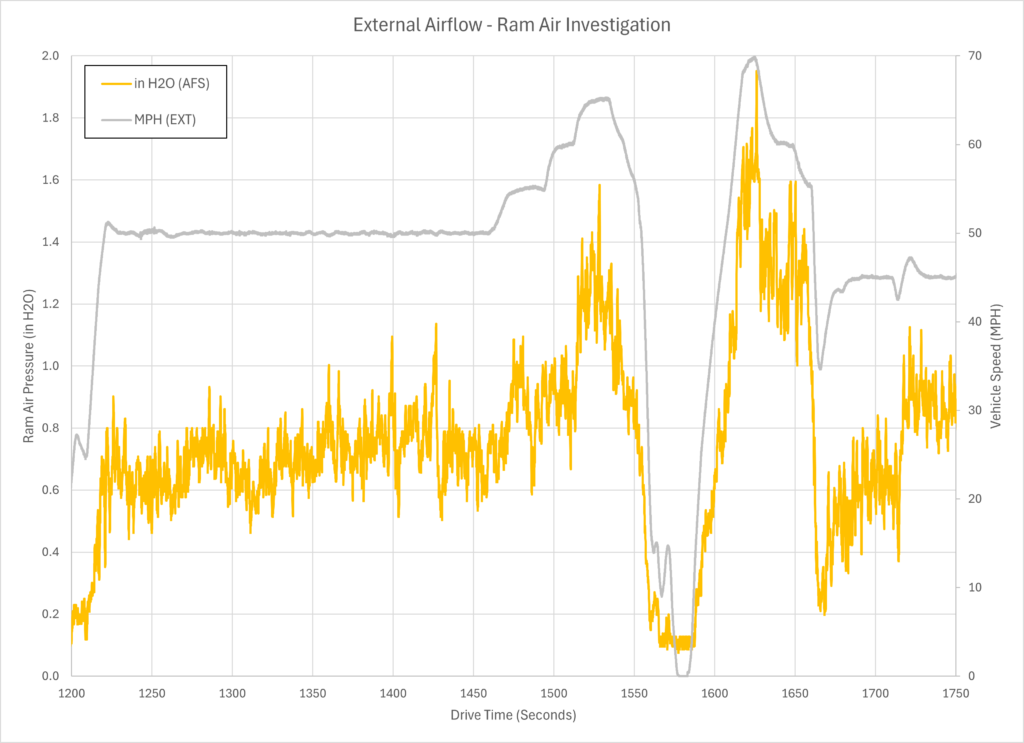
The dynamic pressure is significantly greater and also shows greater variability.
The next chart compares this “external” reading with the measures from the stock airbox (blue lines).
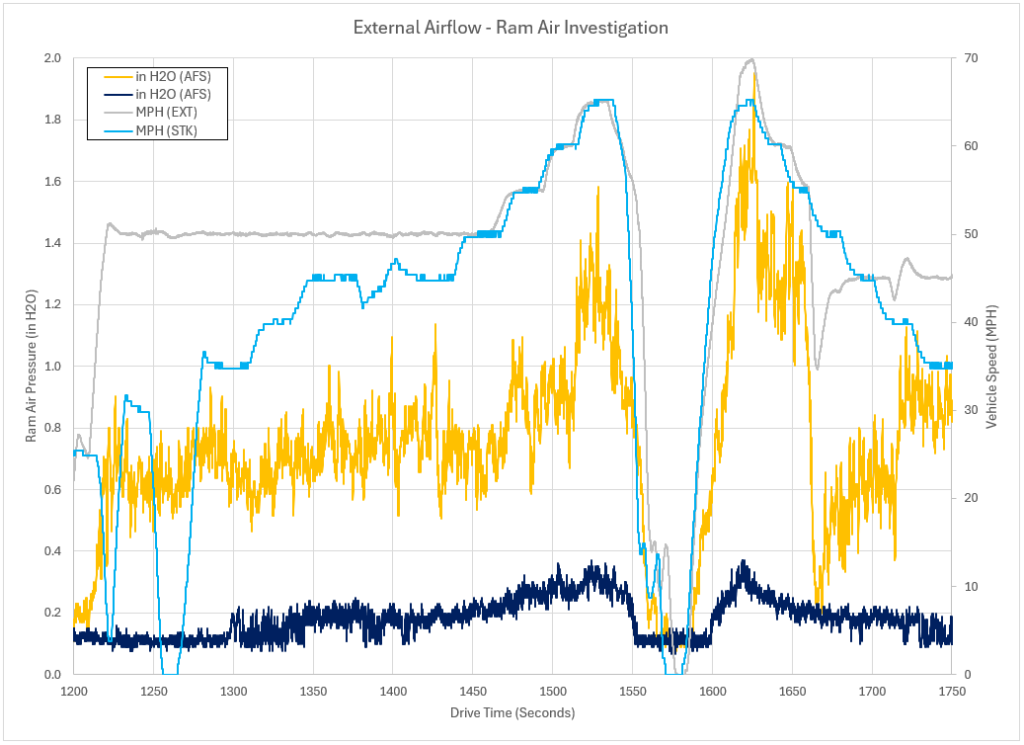
Finally, a comparison is made of the pressure-derived airflow speed.
There is good agreement between the vehicle’s reported speed (light gray line) and the pressure-derived speed (dark gray line) using the AFS.
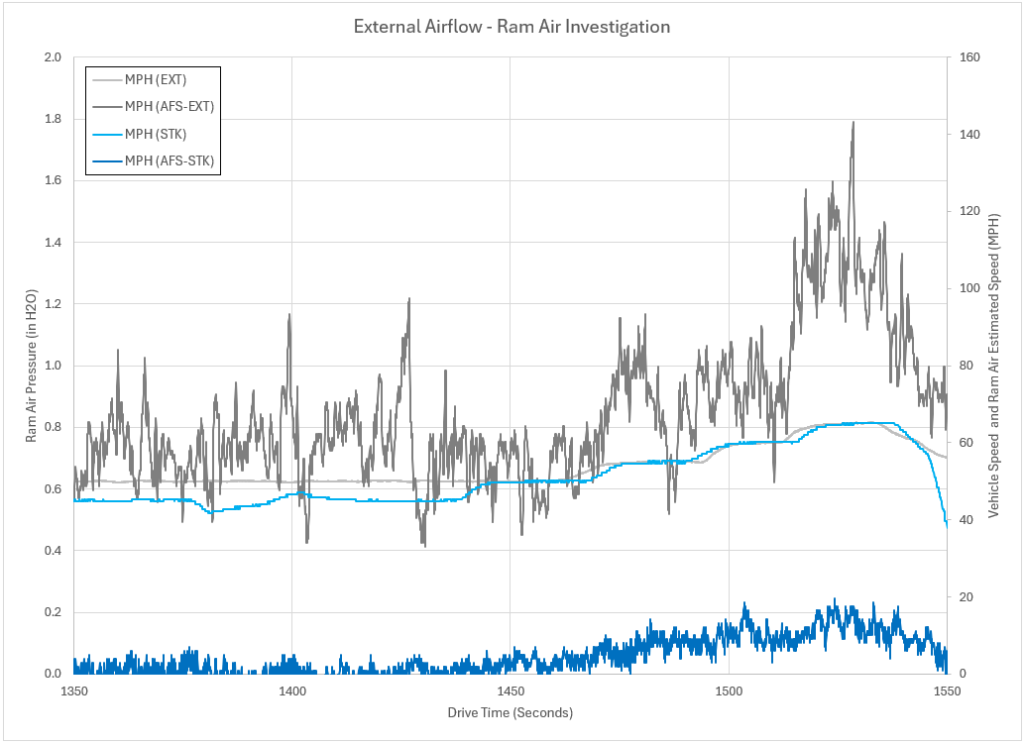
The variance of the measures made external to the engine compartment is likely due to air turbulence. Sources of this could be changing winds and vehicles traveling in front of the GTI.
Vehicles passing from the opposite direction on a two-lane road may also be the source of pressure spikes.
The AFS pressure-derived air speed is slightly higher than the value reported by the vehicle. The vehicle speed has been cross-checked with a Racebox GPS-based data logger and found to be accurate.
From this, it can be concluded that the calculated ram air effect speed through the intake (15 mph @ 60 mph vehicle speed) is no greater than what is shown, and likely slightly less.
Ram Air vs Air Intake CFM
Ram air effect produces an airflow speed of less than 15 mph through the intake at a vehicle speed of 60 mph, how does this compare with the airflow speed generated by the turbocharger?
At an engine speed of 2000 RPM and zero (0) boost pressure the engine draws in approximately 63 CFM. With an intake outlet of 3″ in diameter this produces an airflow speed of 14.6 mph.
V = Q / A
At this operating point, there is no “ram air” effect since the turbocharger is drawing in air at a rate that is equal to the ram air speed.
Once the turbocharger starts generating boost pressure, for example, 21 psi at 2500 RPM, the airflow rate climbs to 206 CFM. This results in an air speed of 47.7 mph through the 3″ diameter intake outlet.
At a rate 3x that of the ram air effect, there is no ram air, the intake is operating under a vacuum.
Some additional data points are shown in the table:
| Operating Point (PSI/RPM) | Volumetric Flow Rate (CFM) | Airflow Speed through 3″ pipe (MPH) |
|---|---|---|
| 0/2000 | 63 | 14.6 |
| 21/2500 | 206 | 47.7 |
| 21/3500 | 295 | 68.3 |
| 21/4500 | 371 | 85.9 |
| 21/5500 | 445 | 103.0 |
Conclusions:
The stock intake was fitted with an AFS probe to measure the ram air effect when the Mk7 GTI is operating on streets at speeds up to 60 mph. The dynamic ram pressure measures were compared with an Eventuri aftermarket intake and the differences were evaluated. There were minimal differences between the two intakes.
The ram air effect air speed through the intake is less than 15 mph at a vehicle speed of 60 mph.
An additional experiment was conducted where the AFS was located on the GTI hood to measure ram air effect outside of the engine compartment. Higher air pressures were recorded when compared to the intake values.
Ram air effect airspeed calculations were compared with vehicle speed measures and found to have a good correlation. The vehicle’s reported speed is slightly lower than the calculated airspeed.

Always impressed with your testing, nice work
Thank you!